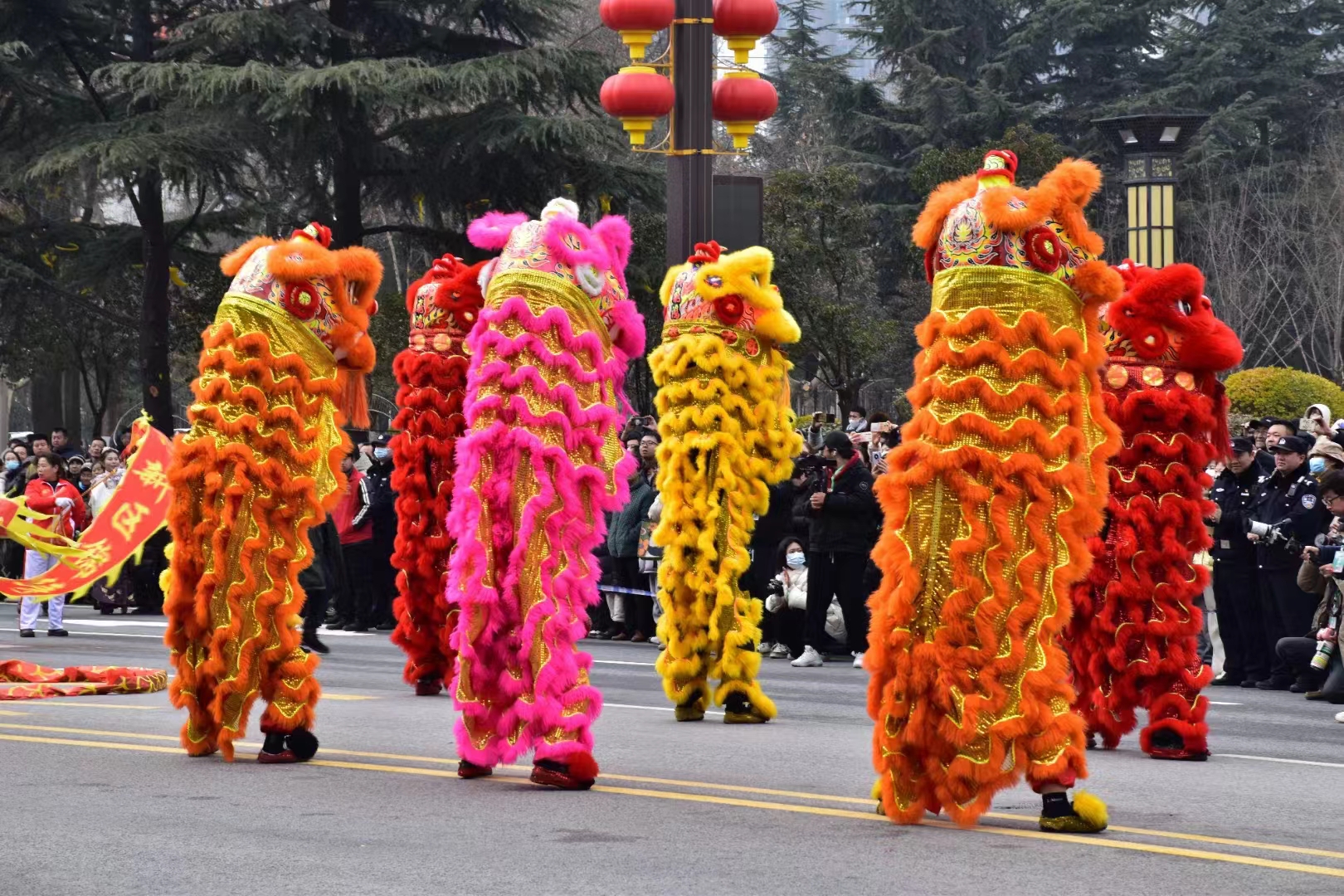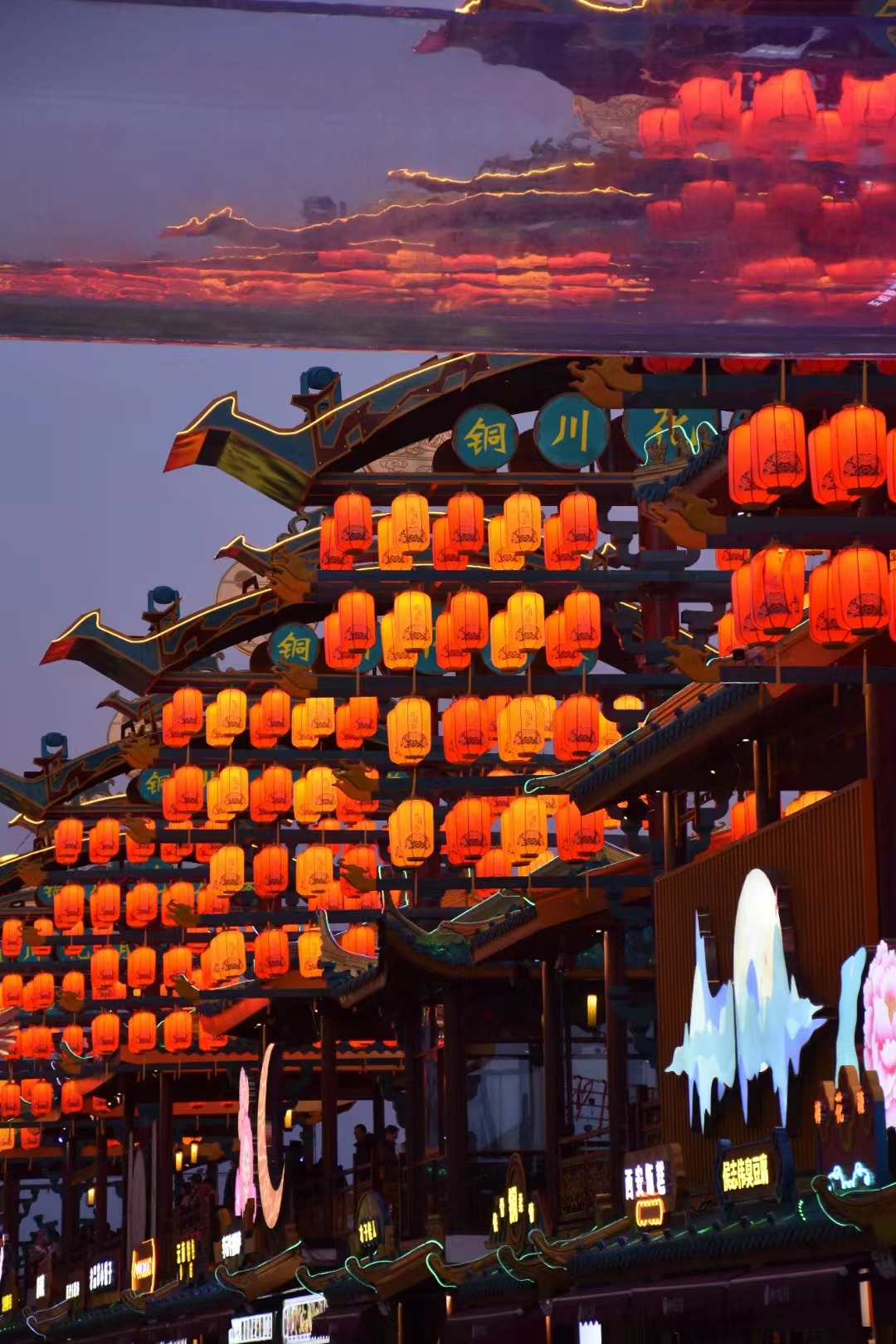
煙花,承載著趨邪避邪、保祐平安的寓意,被視為迎接新年的一種傳統方式。
Fireworks, carrying the meaning of warding off evil and blessing peace, are regarded as a traditional way to welcome the New Year.
一、煙花升空,又是一年
Fireworks liftoff, another year
(一)煙花的起源
The origin of fireworks
煙花的起源可以追溯到中國唐朝時期。據傳,煙花最初是由一位名叫李畹的宮女發明的。她在一次偶然的機會中,將火藥與紙張混合在一起,製成了一種可以燃燒併發出聲響的物品。這便是煙花的雛形。
The origin of fireworks dates back to the Tang Dynasty of China.It is said that fireworks were originally invented by a palace lady named Li Wan.By chance, she mixed gunpowder with paper to make an object that could burn and make a sound. This is the prototype of fireworks.
(二)煙花的歷史
History of fireworks
在唐朝之後,煙花逐漸在民間流傳開來,並成為慶祝節日的重要物品。宋代時期,煙花的製作技術得到了進一步的提升,出現了更多種類的煙花。明清時期,煙花的製作和燃放技術更是達到了巔峰,成為宮廷和民間歡慶節日的必備之物。
After the Tang Dynasty, fireworks gradually spread among the people and became an important item for celebrating festivals. In the Song Dynasty, the production technology of fireworks was further improved, and more kinds of fireworks appeared. In the Ming and Qing Dynasties, the production and setting off technology of fireworks reached its peak and became a necessary thing for the court and the people to celebrate festivals.
(三)為什麼要放煙花
Why do we set off fireworks
放煙花作為一種慶祝方式,其背後蘊含著豐富的文化內涵和寓意。首先,煙花的絢麗多彩和震撼人心的聲響,能夠給人們帶來歡樂和喜慶的氛圍,讓人們感受到節日的熱烈和喜慶。其次,煙花的綻放象徵著美好、繁榮和希望,寓意著人們對未來的美好憧憬和祝願。此外,放煙花也是一種傳統習俗的延續和傳承。在現代社會,無論是國慶、新年還是其他重要節日,煙花的綻放都成為人們共同慶祝的標誌,讓人們在歡樂的氛圍中感受到中國人的團結和凝聚力。
Fireworks as a way to celebrate, it contains rich cultural connotation and meaning behind. First of all, the colorful fireworks and shocking sound, can bring people joy and festive atmosphere, let people feel the warm and festive festival. Secondly, the blooming of fireworks symbolizes beauty, prosperity and hope, which means people’s good hopes and wishes for the future. In addition, setting off fireworks is also a continuation and inheritance of traditional customs. In modern society, whether it is National Day, New Year or other important festivals, the bloom of fireworks has become a symbol of people’s common celebration, so that people can feel the unity and cohesion of the Chinese people in a happy atmosphere.
二、中國醒獅,振奮精神
The Chinese lion, cheer up the spirit
(一)舞獅的起源
The origin of lion dance
舞獅,是中國優秀的民間藝術。舞獅有南北之分,南獅又稱醒獅。舞獅最早起源於漢代,當時被作為一種宮廷娛樂形式。隨著時間的推移,舞獅逐漸傳入民間,併發展成為一種具有地方特色的民間藝術。
Lion dance is an excellent folk art in China. The lion dance is divided into north and south, and the south lion is also called the lion dance. Lion dance originated in the Han Dynasty, when it was used as a form of palace entertainment. With the passage of time, lion dance gradually spread into the folk, and developed into a folk art with local characteristics.
(二)為什麼要舞獅
Why do you want to dance the lion
獅子外形威武、動作剛勁、神態多變。人們相信獅子是祥瑞之獸,舞獅能夠帶來好運,所以每逢春節或其他一些慶典活動,都會在陣陣鑼鼓鞭炮聲中,舞獅助慶祈求吉利。
The lion has a powerful appearance, vigorous movements and changeable expressions. People believe that lions are auspicious beasts, lion dance can bring good luck, so every Spring Festival or some other celebrations, in bursts of gongs and firecrackers, lion dance to help celebrate and pray for luck.
(三)舞獅的傳承和發展
The inheritance and development of lion dance
隨著社會的不斷發展和進步,舞獅表演也在不斷地傳承和發展。一方面,一些傳統的舞獅隊伍和表演形式得到保護和傳承,成為我國非物質文化遺産的重要組成部分;另一方面,一些新的舞獅表演形式和團隊也不斷涌現,為這一傳統藝術形式注入新的活力。舞獅表演也逐漸走向國際舞臺,成為中國文化交流和傳播的重要載體之一。許多華人華僑將春節文化傳播到國外,也讓“老外”體驗到了中國獨有的情懷,舞獅更是得到了他們的青睞。
With the continuous development and progress of the society, the lion dance performance is also continuously inherited and developed. On the one hand, some traditional lion dance teams and performance forms have been protected and inherited, becoming an important part of China’s intangible cultural heritage; On the other hand, some new lion dance performance forms and teams are also emerging, injecting new vitality into this traditional art form. The lion dance performance has gradually moved to the international stage, becoming one of the important carriers of Chinese cultural exchange and dissemination.
Many overseas Chinese will spread the Spring Festival culture abroad, but also let the”foreigners” experience the unique feelings of China, the lion dance is favored by them.
三、大頭娃娃,憨態可掬
Big head doll, cute and adorable
(一)大頭娃娃的起源
The origin of the big head doll
大頭娃娃,俗稱“大頭和尚舞”。南宋時已有“上元佳節,裝演大頭和尚”的記載。關於大頭娃娃,漢族民間有很多相關的傳説:説大頭娃娃可以驅鬼,戴上後,莊稼可以豐收,人民生活可以安康。
Big head doll, commonly known as”big head monk dance”. In the Southern Song Dynasty, there is a record of”Shangyuan Festival, pretending to be a big head monk”. About the big head doll, there are many related legends among the Han folk: it is said that the big head doll can drive away ghosts, and after wearing it, the crops can be harvested and the people can live healthily.
(二)大頭娃娃的傳承和發展
The inheritance and development of big-head dolls
大頭娃娃,是一種具有悠久歷史的民間藝術表演形式。古時,舞蹈形式一般為二人表演,一飾和尚,頭戴笑和尚面具,手拿拂塵或蒲扇;一扮柳翠,頭戴大頭面具,手執扇子或手帕。和尚有撣塵、拜佛等動作,柳翠有搔面、搔耳等表演,以及兩個嬉逗、追逐等即興舞蹈。後來發展到大頭娃娃舞,一般分兩隊,四至八人不等,戴大頭娃面具,穿紅綠綢衫、腰係綢帶,行進時作扭秧歌隊形,廣場表演有相互穿插、逗趣、嬉笑等動作表演。
Big-head doll is a folk art performance form with a long history. In ancient times, the dance form was generally performed by two people, one dressed as a monk, wearing a smiling monk mask, and holding a dust or a leaf fan; Dressed as Liucui, wearing a big head mask, holding a fan or handkerchief. And there are dust, worship Buddha and other actions, Liu Cui has scratching face, scratching ears and other performances, as well as two fun, chase and other impromptu dance. Later developed to the big head doll dance, generally divided into two teams, four to eight people, wearing big head baby masks, wearing red and green silk shirts, waist ribbons, while marching Yangko formation, square performance has mutual interplay, fun, laughing and other action performances.
四、燈火長明,喜樂安寧
Bright lights, joy and peace
(一)燈會的起源
The origin of the lantern meeting
燈會,又稱花燈節或元宵節,是中國傳統的民間節日之一。起源可以追溯到漢代,據傳因為當時習慣在夜間點燃燈籠、放煙火來祈求平安、驅邪,後來逐漸發展成為具有濃郁節日氣氛的文化活動,並延續至今。
Deng hui, also known as Lantern Festival or Lantern Festival, is one of the traditional Chinese folk festivals. The origin can be traced back to the Han Dynasty, and it is said that because it was customary to light lanterns and set off fireworks at night to pray for peace and drive away evil spirits, it gradually developed into a cultural activity with a strong festive atmosphere and continues to this day.
(二)燈會的傳承和發展
The inheritance and development of the Lantern Festival
在唐宋時期盛行,佛教經典中提到過“佛説燈會功德經”,並於每年農曆正月十五日設齋放生,人們開始將燈會與宗教文化相結合,使之更加豐富多樣。明清時期,燈會逐漸成為一項重要的社交活動,參加者通過賞花燈、猜燈謎等方式增加團結和娛樂,同時也成為商賈交易的場所。近現代,隨著科技的發展和城市化進程的推進,燈會的形式愈加多樣化和現代化,如電子燈光、光影秀、無人機表演等成為新時代的亮點。
In the Tang and Song dynasties, the Buddhist classics mentioned the”Buddha said the merits of the Lantern Festival”, and on the 15th day of the first lunar month every year, people began to combine the Lantern Festival with religious culture to make it more diverse. During the Ming and Qing Dynasties, the lantern fair gradually became an important social event, with participants increasing unity and entertainment by watching lanterns and guessing lantern riddles, and also becoming a place for merchants to trade. In modern times, with the development of science and technology and the advancement of urbanization, the forms of lantern fairs have become more diversified and modern, such as electronic lighting, light and shadow shows, and drone performances have become the highlights of the new era.
(三)燈會的文化內涵
The cultural connotation of the Lantern Festival
燈會是中國傳統文化的重要組成部分,其具有深厚的文化內涵和象徵意義,主要包含以下幾個方面:
(1)節日祥和:燈會通常是慶祝重要節日的一種慶典形式,如春節、元宵節、中秋節等。通過燈會慶典,人們表達對節日的祈福和嚮往,營造出濃郁的祥和氛圍。
(2)吉祥如意:燈會中的燈飾圖案,多數都是寓意吉祥如意,如吉祥物、花卉、動物、文字等,寄託著人們美好的心願和期盼,祈求幸福安康。
(3)文化自信:燈會是中國傳統文化的重要載體,其中蘊含著豐富的歷史文化和民俗知識。通過燈會慶典,可以讓人們更深入地了解和傳承中國的文化遺産,同時也加強了中外文化交流和互動。
Lantern Festival is an important part of Chinese traditional culture, which has profound cultural connotation and symbolic significance, mainly including the following aspects:
(1) Festival peace: Lantern Festival is usually a celebration of important festivals, such as the Spring Festival, Lantern Festival, Mid-Autumn Festival and so on. Through the Lantern Festival, people express their blessings and yearning for the festival, creating a strong and peaceful atmosphere.
(2) Good luck: Most of the lighting patterns in the lantern meeting are auspicious, such as mascots, flowers, animals, words, etc., which carry people’s good wishes and expectations, praying for happiness and well-being.
(3) Cultural confidence: Lantern Festival is an important carrier of Chinese traditional culture, which contains rich knowledge of history, culture and folk customs. Through the Lantern Festival, people can better understand and inherit China’s cultural heritage, and also strengthen the cultural exchanges and interactions between China and foreign countries.

舞獅被認為是驅邪避害的吉祥瑞物,每逢元宵佳節或集會慶典,民間都以舞獅前來助興。
Lion dance is considered to be an auspicious thing to drive away evil spirits and avoid harm. During the Lantern Festival or the assembly celebration, the people come to the lion dance to support the fun.

大頭娃娃,也稱拋大頭或羅漢舞,是一種傳統的民俗文化表演,也是人們寄託美好願望的一種方式。
Big head doll, also known as tossing big head or Luo han dance, is a traditional folk culture performance and a way for people to express their good wishes.

燈會是由官方舉辦的大型燈飾展覽活動,常附帶有民俗活動,極具地方特色。寓意著祈求光明、平安團圓。
Lantern Fair is a large-scale lighting exhibition held by the official, often accompanied by folk activities, very local characteristics. It means to pray for light, peace and reunion.